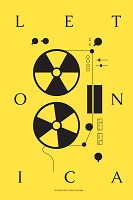The ‘Ornament Grammar’ of Neoclassicism in Late Art Nouveau Interiors of Rīga
The ‘Ornament Grammar’ of Neoclassicism in Late Art Nouveau Interiors of Rīga
Author(s): Silvija Grosa, Agnese TambakaSubject(s): Architecture, Sociology of Culture, Sociology of Art, History of Art
Published by: Latvijas Universitātes Literatūras, folkloras un mākslas institūts
Keywords: Late nineteenth and early twentieth century; architecture; Neoclassicism; motifs of Greco-Roman art; ceramic wall tile;
Summary/Abstract: The ‘Ornament Grammar’ of Neoclassicism in Late Art Nouveau Interiors of RīgaIn recent decades, ornament studies have been on the rise in Western art history. This is evidenced by a number of significant publications examining ornament from various perspectives. Also noteworthy are conference materials that deal with ornament in terms of analysis and reinterpretation of earlier theories in this field. One has to agree with leading Dutch researcher of the Late Middle Ages and Renaissance, Ethan Matt Kavaler, who notes that the situation of ornament studies today is much as it was at the end of the nineteenth century (Kavaler 2019: 1275), where the matter of ornament ‘has become so important as to occupy center stage in the debates about art practice and art history’ (Vandi 2018: 40). At that time, the industrial revolution and mass production of richly decorated items had urged a reassessment of the principles on which the creation and use of ornament were based. With the publication of Owen Jones’ The Grammar of Ornament in the mid-nineteenth century, followed by numerous other editions in the second half of the nineteenth century, ornament had become not only the object of research in the context of historical styles, but also a catalyst for cultural belonging, a sign of social and intellectual difference, as ‘ornamented artefacts were understood to reveal the DNA of cultures’ (Necipoğlu, Payne 2016: 2). This ‘revision,’ along with in-depth studies of nature that flourished in the second half of the nineteenth century, proved useful quite soon when, at the turn of the twentieth century, masters of Art Nouveau turned to motifs from several historical styles (Gothic and Rococo) alongside stylized natural forms, thus creating a specific ornamental Art Nouveau world. Ornament permeated all kinds of art and was very important in the architecture of the era. However, the overabundance of ornamental décor inspired the famous 1908 essay Ornament and Crime (Ornament und Verbrechen) by Adolf Loos, which is seen as one of the points of reference for modernist architecture (Payne 2010: 79) and also marks a paradigm shift in the assessment of historical styles and especially Renaissance architecture. This approach, groundlessly ignoring the role of ornament, discarded the balance between the aspect of spatial-technical solution and the overall aesthetic conception. ‘In the wake of contemporary art’s rejection of ornament, historical scholarship also abandoned this topic by the mid-twentieth century, by which time it had been practically excised from scholars’ repertoire of interests’ (Necipoğlu, Payne 2016: 2). Publications dealing with ornament as well as studies published in the last decades in the West about industrial design, including ceramic tile, have inspired the subject choice for this article. While exploring ornament as a catalyst for stylistic trends in Late Art Nouveau interior décor of apartment house vestibules in Rīga, the authors of this article pay attention also to the terminology of ornamental motifs. Industrially produced ceramic wall tile and panels thereof are examined, and information on producers is provided.
Journal: Letonica
- Issue Year: 2022
- Issue No: 46
- Page Range: 140-159
- Page Count: 20
- Language: English

